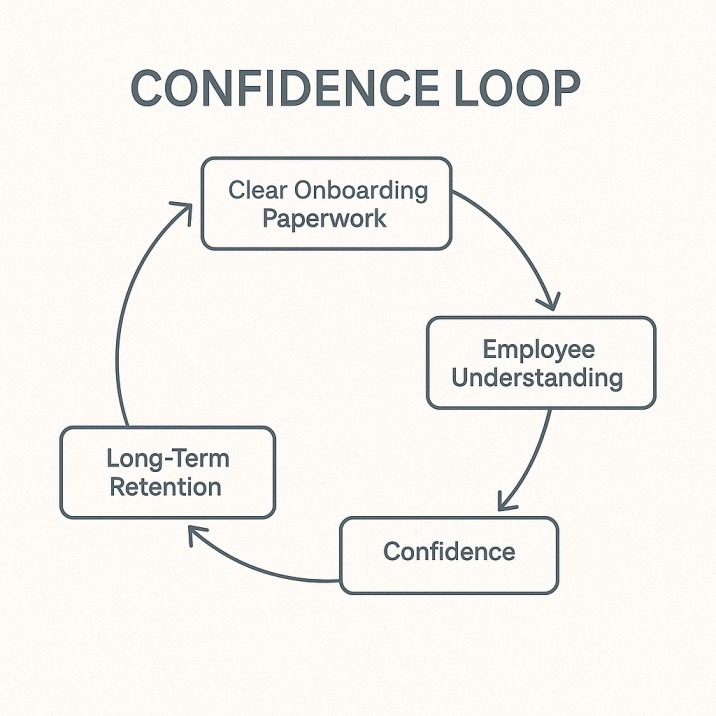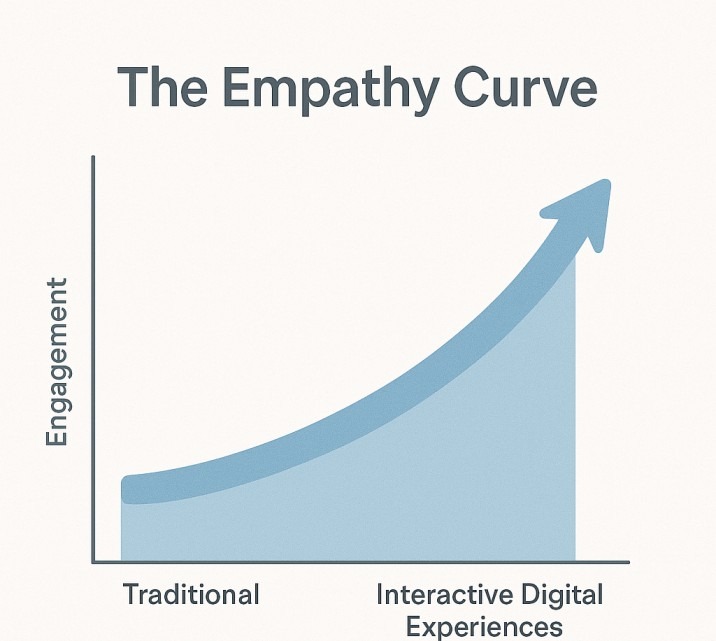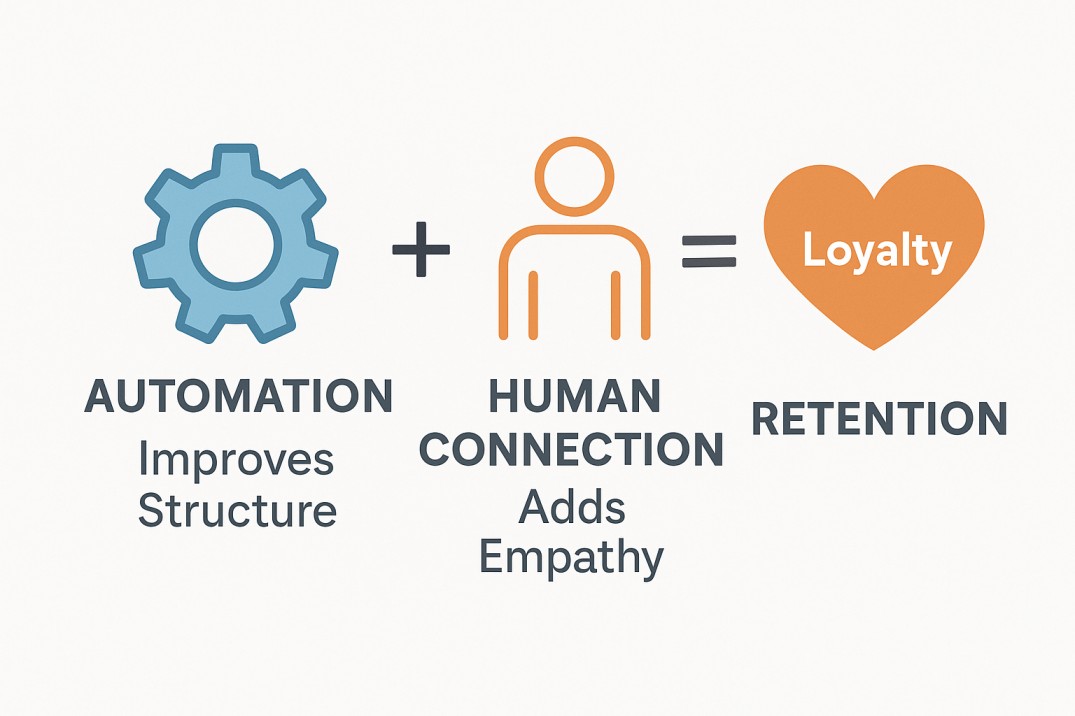Every successful company knows that first impressions matter — and nowhere is this more true than in onboarding. Yet, many organizations underestimate how the simplest processes, like onboarding paperwork, shape how long employees stay. Far from being just forms and signatures, onboarding paperwork is the silent foundation of trust, organization, and culture that every new hire experiences in their first week. When structured intelligently, it transforms what could be a bureaucratic headache into a moment of clarity and belonging.
Smarter onboarding paperwork doesn’t just make HR’s life easier — it directly impacts retention rates. When employees feel guided and informed from day one, they engage faster, perform better, and are statistically less likely to leave within their first year. The paperwork that once symbolized red tape now has the power to build loyalty, if designed and delivered right.
Onboarding paperwork plays a decisive role in shaping employee retention. When streamlined, digital, and empathetically designed, it transforms bureaucracy into belonging. Clear instructions, secure data handling, and intuitive workflows create trust from day one, signaling that the company values organization and care. Smart onboarding paperwork connects compliance with culture, turning a first-day formality into a long-term engagement strategy that boosts retention and strengthens loyalty.
The Psychology Behind Early Experience
The employee journey begins long before the first team meeting. It starts the moment a new hire opens an email containing their onboarding paperwork. That single digital interaction can convey whether a company values structure or confusion, empathy or indifference.
Traditional onboarding paperwork often feels fragmented — forms scattered across platforms, redundant questions, unclear policies. Smart onboarding paperwork, on the other hand, creates a guided flow where every field, every form, and every acknowledgment builds confidence. When employees see that their company values efficiency, they subconsciously feel respected. This sense of respect translates into higher job satisfaction, stronger commitment, and measurable improvements in retention.
From Bureaucracy to Belonging
The onboarding phase used to be seen as administrative—something HR had to “get out of the way.” But modern companies are reimagining onboarding paperwork as an emotional and cultural touchpoint. Every document an employee signs — from policy acknowledgments to benefit forms — communicates tone, values, and transparency.
Imagine logging in on your first day to find all your onboarding paperwork digitized, pre-filled with basic data, and complemented by short explanations that clarify what each document means and why it matters. That sense of clarity replaces confusion with trust. Smart onboarding paperwork systems now embed micro-explanations, contextual guidance, and visual cues that reduce friction.
When employees don’t need to ask ten questions just to complete HR forms, they begin their journey feeling capable. Capability breeds confidence, and confidence breeds connection — the psychological bridge that keeps people anchored long after the honeymoon period ends.

The ROI of Intelligent Design
Onboarding paperwork isn’t just a compliance necessity — it’s an opportunity for strategic design. A well-designed process saves time, reduces errors, and communicates brand professionalism. Companies often talk about employee experience, yet overlook how small design decisions in onboarding paperwork can make that experience seamless or frustrating.
Smart systems now automate data entry, store records securely, and synchronize information across departments. HR professionals spend less time on manual corrections, and employees experience less frustration. These time savings compound into something greater — an emotional dividend that increases trust and reduces early turnover.
According to a 2024 HRTech study, organizations that invested in digital onboarding paperwork solutions saw an average 27% improvement in employee retention within 12 months. The reason is simple: efficiency reflects care. When employees see processes built around their convenience and clarity, they interpret it as organizational respect. That respect becomes loyalty.
Beyond the Form: Emotional Design and Digital Empathy
The transition from paperwork to engagement happens when design meets empathy. Smart onboarding paperwork integrates emotional design — using friendly language, intuitive layouts, and personalization. For instance, addressing employees by name, using welcoming color palettes, and including brief welcome notes from managers within the digital form ecosystem.
This small touch has a massive psychological effect. It communicates that the company sees new hires as people, not processes. That emotional warmth amplifies connection, and connection fuels retention.
Incorporating gamified checklists or progress bars in digital onboarding paperwork is another form of subtle encouragement. When new hires can visually see progress — 70% done, 90% complete — it sparks satisfaction. Each completed form becomes a milestone rather than a chore.

Data, Compliance, and Employee Trust
Smart onboarding paperwork isn’t just about speed; it’s also about security. Employees today are deeply aware of data privacy. When they see that their personal information is handled through secure, encrypted systems rather than unsecured email attachments or photocopies, their trust deepens.
Trust is one of the invisible anchors of retention. A 2025 Workhuman survey found that 61% of employees who trusted their employer’s data practices were twice as likely to remain with the company beyond three years. Onboarding paperwork becomes the first handshake in that trust relationship.
The integration of e-signatures, automatic version tracking, and centralized compliance records ensures not just legal safety but emotional safety. Transparency in documentation — showing what data is stored, for how long, and for what purpose — turns an obligation into a gesture of integrity.
Retention Through Continuity
Smart onboarding paperwork isn’t a one-time interaction; it can evolve into an ongoing resource. Companies that connect onboarding data to performance systems can identify early engagement trends. When HR can see that employees who completed onboarding paperwork seamlessly also reported higher satisfaction scores, the link between process and retention becomes undeniable.
The continuity of experience — from paperwork to career progression — is what defines modern HR excellence. Smart onboarding paperwork creates data trails that help personalize learning modules, benefits enrollment, and compliance updates. Employees no longer see HR as reactive, but as anticipatory.
The Human Touch Behind Automation
While automation drives the efficiency of onboarding paperwork, the human touch sustains its warmth. Smart systems don’t replace HR professionals — they empower them. With paperwork handled intelligently, HR has more time to focus on relationship-building, mentorship, and culture embedding.
The paradox of automation is that it creates room for humanity. A well-implemented digital onboarding paperwork process doesn’t make experiences colder; it makes them smoother. When employees feel the presence of both structure and care, retention follows naturally.
Smart onboarding paperwork reflects a company’s deeper philosophy: do we treat people as forms to process or as individuals to nurture? The companies that choose the latter, supported by digital precision, are the ones that retain their best people.

Conclusion
In the end, onboarding paperwork may seem like a small piece of the HR puzzle, but it’s one that touches every new hire directly. When reimagined as an experience rather than a task, it becomes a retention tool — one that signals organization, care, and trust.
Smart paperwork doesn’t just fill databases; it fills confidence gaps. It ensures that new hires don’t feel lost, that HR doesn’t feel burdened, and that the company’s first impression echoes competence.
Retention isn’t only about pay or perks; it begins with how a company welcomes someone. The humble act of completing onboarding paperwork, when done intelligently, sets the tone for everything that follows — belonging, engagement, and loyalty.
Andrea Balint is a writer and researcher focused on human behavior, workplace psychology, and personal growth. Through her work at CareersMomentum, she explores how mindset, leadership, and emotional intelligence shape modern careers. With a background in communication and HR development, she transforms complex ideas into practical insights that help readers build clarity, confidence, and professional purpose.
